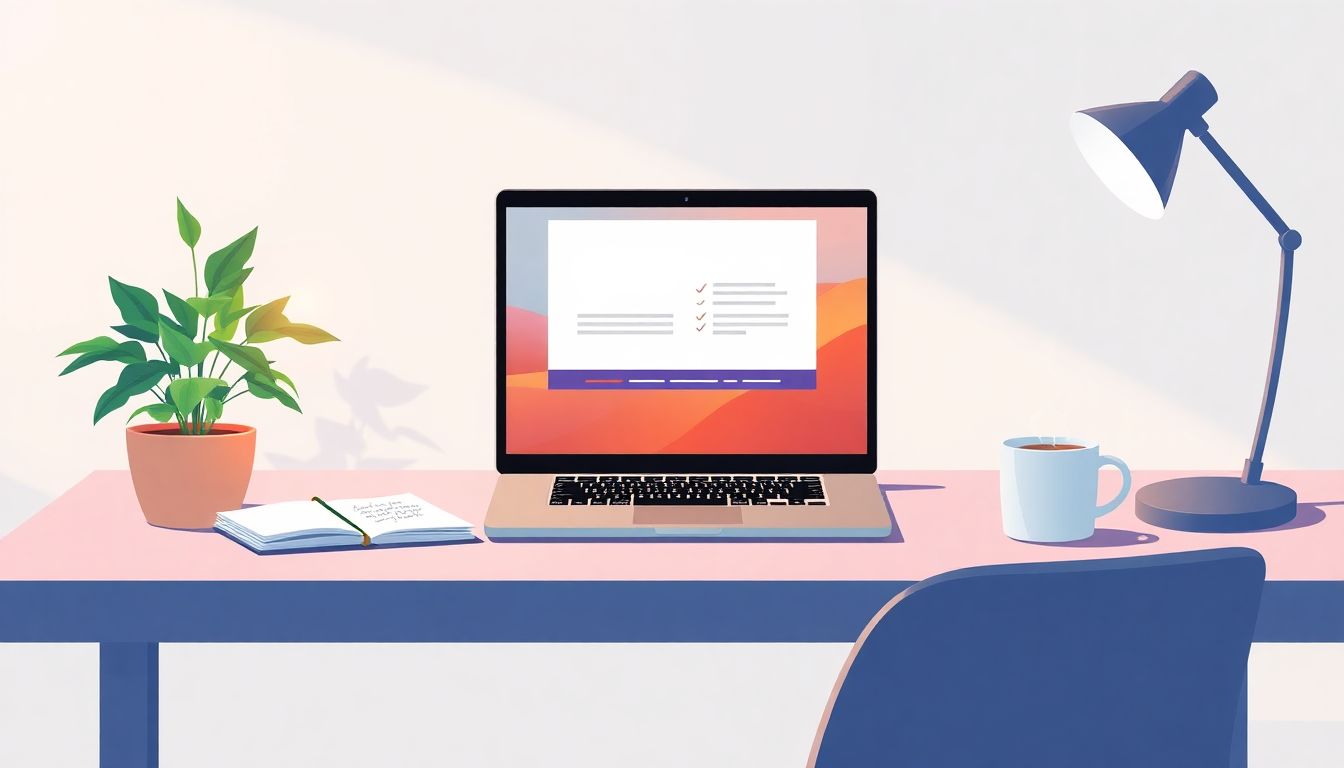Hosting webinars that resonate isn’t easy, and figuring out what to talk about, how to attract people, or keep them interested can feel exhausting. Trust me, you’re definitely not the only one feeling this way.
But stick around, and you’ll pick up simple, proven steps for choosing engaging topics, creating buzz around your event, making a killer presentation, and even keeping attendees hooked after it’s over.
Ready? Let’s jump straight into the first step.
Key Takeaways
- Write a clear and concise webinar description addressing audience needs, clearly stating practical benefits they’ll receive.
- Focus your webinar topic on specific issues or common questions from your audience—simpler, targeted sessions attract higher attendance.
- Promote heavily via email and social media; Tuesdays are ideal for webinar registrations, and midweek sessions tend to perform better.
- Prepare engaging slides with visuals and bullet points; speaking naturally, sharing examples, and encouraging interaction keeps participants interested.
- Send follow-up emails after the webinar, provide recordings and extra resources, request feedback, and turn webinar content into smaller pieces for reuse.

Step 1: Write an Effective Webinar Description
The trick to writing webinars that people actually want to attend begins with crafting a description that immediately shows its value. Think of your webinar description as a mini sales pitch: keep it short, clear, and appealing enough to make the reader say, “I need this.” Don’t cram in unnecessary jargon—stick to plain language that directly addresses your audience’s needs or pain points.
A great way to do this is by clearly defining what your attendees will gain from your webinar. A specific promise about what they’ll walk away with always beats a vague ramble. For example, instead of saying “Learn about self-publishing,” you could say, “Discover how to publish your own book without an agent in just 60 minutes.” This gives a defined goal and promises real benefit, which makes signing up an easy decision.
Make sure to highlight your presenter(s) briefly to build credibility and excitement around the event. And here’s an important tip: keep your description conversational, readable, and non-intimidating. It helps potential attendees to relate and feel comfortable.
Step 2: Choose a Relevant Topic and Create Valuable Content
If you want lots of attendees, you need more than just compelling words—you need a webinar topic that’s actually useful to your audience. A good practice is to start by analyzing what your audience frequently asks or discusses and build your webinar around solving specific problems or providing insights. You can use surveys, comments, Q&A sessions, or even email responses to pinpoint relevant topics.
Also, what’s interesting about webinars is that smaller, focused sessions actually tend to perform better. Recent stats from LinkedIn’s report show webinars with fewer than 100 registrants have a 10.3% higher live attendance rate. Since 91% of B2B professionals say webinars are their preferred type of content, you’re already playing in a winning field—just keep your content practical, valuable, and actionable.
For instance, instead of general writing advice, you could host targeted sessions, such as exploring funny writing prompts for kids to capture educators and parents. Remember, your webinar should provide clear takeaways: relevant tips or steps the viewers can apply immediately.
Step 3: Use Proven Methods to Promote Your Webinar
You can have the most valuable webinar in the world, but without effective promotion, it won’t get attendees. What’s proven to work best? Email marketing, hands down. According to studies, roughly 57% of webinar registrations come from email marketing campaigns. So, always start by notifying and reminding your email list regularly but strategically—not in an annoying, spammy way.
Pair email campaigns with posts on social media platforms (like LinkedIn, Facebook, Instagram) that fit your audience, and blog posts about related topics. You can even try cross-promotion to tap into new audiences, partnering with content creators or influencers to drive more eyeballs to your webinar.
Also, timing matters a lot here. Industry reports reveal that most webinar registrations happen on Tuesdays (around 21%), with Wednesday and Friday webinars receiving higher-than-average registrations. Keeping these statistics in mind, promote your session accordingly for better reach and attendance.

Step 4: Prepare and Deliver Your Webinar Presentation
Wondering how to prepare an engaging webinar presentation people actually enjoy watching?
The very first thing to do is keep your slides clean and simple—nobody likes to stare at walls of text.
Stick to bullet points, visuals, and a clear structure to help your viewers follow along effortlessly.
When you’re presenting, talk to your audience like you’re chatting with friends over coffee.
Avoid stiff, overly formal language; just be yourself and speak normally.
This approach makes your audience feel comfortable and connected, and they’re more likely to pay attention.
Another important thing is to test your webinar software and internet connection beforehand.
There’s nothing worse than being all pumped up to present and then encountering technical glitches at the last minute.
Consider recording a practice run the day before to identify any issues you might overlook otherwise.
If your topic involves storytelling or creative concepts—like teaching how to write a dystopian story—it helps to sprinkle in short anecdotes or interesting examples.
Stories naturally hold attention, making it easier for people to absorb and remember key points.
And finally, encourage interaction through polls, Q&A sessions, or even breakout rooms if your platform allows it.
Interactive webinars are way more engaging than passively watching presentations, helping attendees stay alert and involved throughout the session.
Step 5: Engage Attendees After the Webinar is Over
Finished your webinar and think that’s the end of it? Definitely not!
Engaging attendees after your session wraps up turns one-time viewers into long-term connections or even customers.
The easiest way is a thank-you email to attendees within 24 hours.
Include the webinar recording because research shows 63% of webinar views happen on-demand—as some people prefer catching up later.
In your email, you can also send out supplementary materials or links to extra resources relevant to your presentation topic.
Speaking of follow-ups, inviting participants to sign up for your newsletter or social channels helps keep conversations flowing.
Create small incentives for joining, such as access to exclusive content or discounts for future webinars—that little nudge usually works wonders.
Don’t forget to ask for feedback in your follow-up.
A quick survey (keep it short!) helps you understand how people felt about the webinar and what they’d like to learn next.
Use this feedback to improve future sessions and tailor upcoming topics to exactly what your audience wants.
And here’s something many hosts overlook: repurposing your content.
Easily transform parts of your webinar into standalone clips, blog posts, or social media pieces.
For instance, a webinar teaching writers how to publish a coloring book could spin off shorter tutorials or even Pinterest visuals—making your content go further effectively and efficiently.
Bonus Tips to Keep Your Audiences Coming Back
You did all the main steps, but how can you make your webinar series successful over the long haul?
First, consistency is key: host your webinars on a regular schedule, so your audience knows when to expect them.
If viewers know they can count on fresh sessions the first Tuesday of every month, they’ll eagerly return each time.
Second, vary your formats occasionally.
Try panels, interviews, or shorter “mini-webinars” to keep things interesting; this prevents monotony and attracts attendees who prefer different learning styles.
Also crucial—reward loyalty.
Give repeat attendees exclusive tips, resource checklists, or early access to limited-seat webinars.
Treating your regulars like VIPs motivates them to show up repeatedly and builds a strong community over time.
Always be responsive to your audience’s interests and changing needs.
Periodically run quick topic surveys or polls on your social accounts to see what’s currently capturing their curiosity.
Use that direct input to choose timely, relevant subjects for upcoming sessions—such as winter writing prompts around colder months or holiday themes.
Lastly, keep an eye on analytics. Check attendance rates, drop-offs, and replays regularly.
Numbers indicate what’s working well—and what isn’t—so you can constantly fine-tune content and timing.
Over time, making even small adjustments significantly boosts audience retention and returns.
FAQs
An engaging webinar description clearly addresses audience interests, outlines key benefits, and sets audience expectations. It should be concise, easy to read, and include compelling reasons that speak directly to participants’ goals or needs.
Promote your webinar using methods such as email marketing, social media announcements, targeted ads, and collaborations with relevant partners. Clearly highlight benefits participants will receive, and provide incentives for early registration or attendance.
To deliver a smooth webinar, practice the presentation multiple times, test your equipment thoroughly, and prepare clear visuals. Pace yourself carefully throughout, speak with clarity, and leave sufficient time for audience interaction and questions.
Send attendees follow-up emails containing webinar recordings, resource downloads, or exclusive offers. Request feedback through surveys, ask attendees what topics interest them in the future, and continue nurturing connections regularly to maintain engagement.
